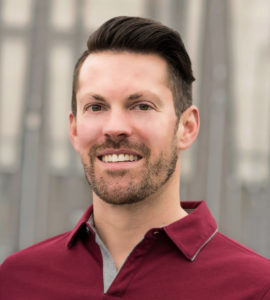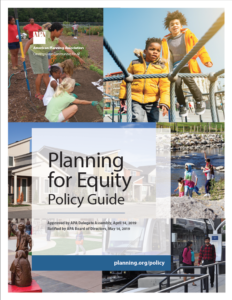By Jonathan Schuppert, AICP, July 22, 2020
Planning for equity and inclusion
 Much has recently been said, and by so many, about the countless inequities in our society and the underlying systemic racism that led to so many. Is there more to be said? We have a universal and societal problem and we need to keep the conversation going until it is fixed. A sage of the first century said, “We are not obligated to complete the work, but neither are we free to desist from it.” (Ethics of the Fathers, 2:21) We must make a start.
Much has recently been said, and by so many, about the countless inequities in our society and the underlying systemic racism that led to so many. Is there more to be said? We have a universal and societal problem and we need to keep the conversation going until it is fixed. A sage of the first century said, “We are not obligated to complete the work, but neither are we free to desist from it.” (Ethics of the Fathers, 2:21) We must make a start.
I can’t pretend to fully understand the extent that inequities exist throughout our society nor can I, as a white male, fully understand what it is like to be judged and discriminated against because of the color of my skin. Like many of you, I’ve taken the last couple of months to listen, learn, and seek to understand how to make meaningful change.
Call to action
I’m hopeful and encouraged that so many people have taken the time to listen and think inward. Now is the time to think outward and act. In fact, taking action in this regard is part of our AICP Code of Ethics:
“We shall seek social justice by working to expand choice and opportunity for all persons, recognizing a special responsibility to plan for the needs of the disadvantaged and to promote racial and economic integration. We shall urge the alteration of policies, institutions, and decisions that oppose such needs.”
For planners who can influence policy, APA’s Planning for Equity Policy Guide provides guidance to support equity in all aspects of planning. APA California has a Racial Justice and Social Equity page with resources for planners.
 Take the time to understand the implicit biases we have (see toolkits) and — for those of you involved with creating policy — encourage your organization to host a bias training session.
Take the time to understand the implicit biases we have (see toolkits) and — for those of you involved with creating policy — encourage your organization to host a bias training session.
Remember, there’s no action too small to start on this journey, and our efforts should not relate just to our professional lives.
Where and when
For starters, when you hear something that isn’t right, say something. It can be at the dinner table, on a conference call, or any number of places. And, if someone offers you actionable feedback, listen with an open mind.
We all have room to grow, and together we can help shape a better future. We might choose to take action in different ways; however, silence or complacency is not an option for creating change.
What’s next
So, how do you want to show up for change? What action(s) will you commit to doing? Do you have an accountability buddy or two to make sure you and they follow through?
My immediate and current actions are to write and broadly disseminate this note and to finish reading “The Color of Law” by Richard Rothstein (bought from a local brick-and-mortar bookstore).
I commit to listen and learn how to make things right — and to act!

